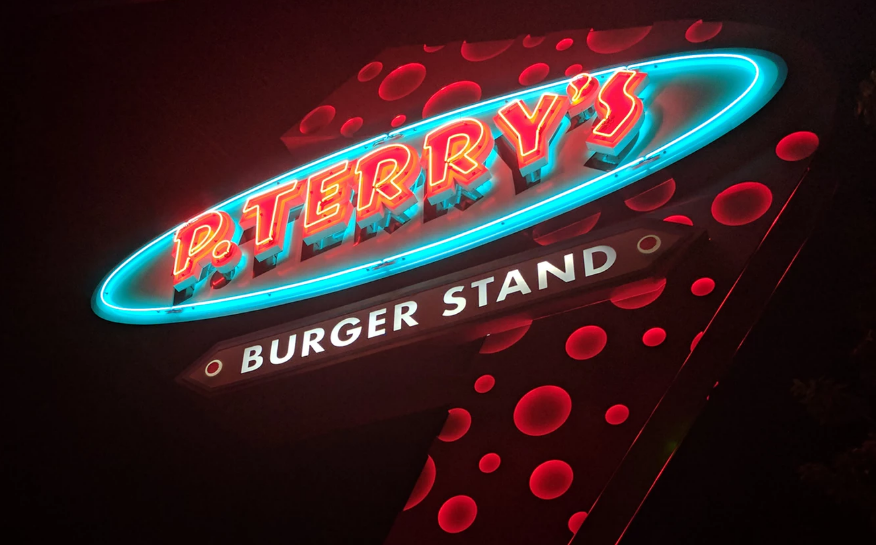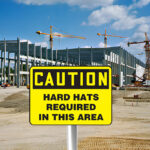Many people are surprised to find that advertising has a rich and fascinating history. You can trace its origins back to ancient times. But the industry of today is almost unrecognizable from the promotions of the past.
In this article, we are going to tell you all you need to know about the history of advertising. On top of this, we look at how signs developed as a part of this industry.
What is advertising?
Before we delve into its past, let’s take a look at what the word means.
Advertising is, in essence, a means of communicating with a specific audience. These are usually either current users or potential users of certain products and services. The goal is usually to influence people to take a particular action, most often to buy a product or service from a business.
The messages are called advertisements or ads for short and can come in a multitude of forms like:
- Printed signs
- Digital signs
- Videos
- Audio clips
- Magazine spreads
It’s an exciting and ever-changing field. You never know what’s coming next. But thanks to this it can also get pretty complicated.
Nowadays, the industry consists of a variety of different types of companies and careers like copywriting to sign fabricators. Each works on different parts of the process of creating promotional materials.
To get a hold on the present and future of advertising, it can help to learn more about the history of advertising.
The early history of advertising
Once upon a time in a place far, far away…
Just kidding. But in a way, the story of how advertising started can almost sound like a myth or a legend.
We have to go back to ancient Egypt in 2000 BC. In the land of pyramids, people carved promotional materials into stone and steel. They also painted on walls and rock.
It soon evolved. Later on, papyrus became a popular advertising medium in Egypt. People often used it for public notices and political campaign.
These scrolls were also commonly used by the Romans and Greeks. Archaeologists have even found ancients Grecian urns with advertisements painted on them. Here they were also used for political messages as well as commercial entities like drinking establishments and fabric sellers.
Sometimes you have to see something to believe. Take a peek at these examples of old advertisements.
Throughout the centuries, people promoted different products and services verbally. It continued through the middle ages via town criers, etc.
Interestingly, advertising developed independently in different countries throughout the world. For example, people have found printed advertisements that date back to the Song dynasty in China.
The era of printed advertisements
Things dramatically changed with the invention of Gutenberg’s printing press in the 15th century. Not only with promotions but in all spheres of life. The press has undoubtedly turned out to be one of the most influential technological advancements.
Thanks to the spread of this invention, people gradually gained access to a way to reproduce written works more quickly and efficiently than ever before.
In the Western world, the first printed ad was created by William Caxton for a book in 1476 or 1477.
Over the next few centuries, printed advertisements became more and more prolific. When the 1700s came around, the first ad was published in a newspaper. Posters became widespread and were, for example, in the United States widely used for enlistment campaigns.
This brings us to the year 1840 when Volney Palmer founded the world’s first advertising agency. At the same time, big brands like Kodak began to look for ways to promote their products.

Yes, printed advertisements dominated this period, but this wasn’t the only popular platform. Electric signs were popping up all over the place. And we can’t forget the invention of the radio which opened eventually opened up a whole new medium for potential advertisements.
On top of this, the very first television advertisement was aired by NBC on 1 July 1941. And since then video adverts have formed a vital part of the advertiser’s repertoire in conjunction with more traditional platforms.
The ‘Golden Age’
In the end, all of these developments led to what has been called the Golden Age of advertising. It reached its peak in the years from the 1960s to the 1980s. We remember the era for its big personalities and flourishing ad agencies like the ones you can see in TV series like Mad Men.
Companies had to become more and more creative to compete and to stand out from the crowd.
Overall, one of the defining features of this period was how advertisers aimed at getting an emotional response. Brands wanted to create a connection with consumers. Therefore, brand identity became more important. And it continues to play a crucial part in any business.
People began to pay increasing attention to the different elements that make an ad successful. On top of this, agencies began to use psychological research and principles to help them improve their work.
Advertising today
Finally, we can begin to talk about contemporary advertisements. Once again, the whole industry was revolutionized. The internet added a whole new dimension to promotional materials.
Some of the most widely used online advertisements today are pay-per-click (PPC) advertising, keyword ads, banner ads, and mobile advertising. This is only to name a few.
A few of the essential innovations and principles of this period were:
- Targeted promotions: One of the ways to beat the competition is to direct your ads toward a particular audience. With social media sites, positioning, and so on you can increase your chances of reaching the specific people you need.
- Interactive adverts: Nowadays, one of the most effective ways to influence people is through interaction. Adding interactive elements to ads of any kind is a way for you to make it more memorable and influential.
- Research: Overall, more thought goes into creating adverts than ever before. User research is one of the essential parts of the whole process. Thanks to technological advancements, you can track everything from how many people see an ad to how much time they spend looking.
- Design: Advertisers use all of this research to create thoughtful and impactful promotions. The process of designing ads has been refined to an art form.
What counts as signs?
Now we can look at signs. Yes, signage is a vital aspect of advertising. It has been part of this industry from the very start. However, you should know they aren’t limited to this. There is much more to it.
When you boil it down to its essential elements, signage is a variety of symbols that you can use to communicate a message. Therefore, this means that signs can be almost anything that you can refer to something else.
But in this case, we are talking about signage products. These are visual displays that people use to convey information to your audience. Sometimes they are purely informative. On the other hand, you can use them to promote a business, product, service, etc. like the types we will focus on.

Fabricators can create products in an endless number of shapes and sizes. And you can use these on a variety of platforms.
Some of the critical types of signs you should know about are:
- Banners
- LED message centers
- Yard signs
- Floor graphics
- Real estate signs
- Point of purchase displays
- Post and panel signs
Where did signs get started?
So where can we find the roots of signs?
The first types of signs that we know about are cave paintings. Archaeologists believe that people used them for ritual and symbolic purposes. However, one of the critical roles of these paintings was to communicate with other human groups.
For all the thousands of years since then, there have been examples throughout the world of different types of signs from Sumerian cuneiforms to Egyptian hieroglyphics. You can find ones for all kinds of purposes.
But it seems that modern signage started with the ancient Greeks and Romans. Most people were illiterate in those days. So they made signs that mainly featured images. They usually created these by painting pieces of stone or terracotta.
By then, people already used signs to promote and mark certain businesses like vendors, workshops, and even taverns. Besides this, they used wooden symbols like a cross to point out churches.
Growth of signage
As time progressed, people began to use signs for businesses and organizations increasingly. Overall, this is because trade, commerce, and wealth began to increase at a rapid pace. Therefore, there was already more competition for attracting customers.
As a matter of fact, King Richard II even passed an act in 1389 that every tavern needs to post a sign on its exterior. This was the first law regarding signage.
Over time people made the visuals on their boards more elaborate to catch potential customers’ eyes. In many ways, this trend is still continuing.
Evolution of signs
Similar to the huge leaps and bounds we saw in advertising in the 1800s, signage also kept on evolving. During this time, gaslighting and electric bulbs were invented. Once again, a whole new world of possibilities had opened up in the world of advertisements and signage.
People began to light up their signs with these lights. Finally, businesses could create boards that could be read at night. Therefore, as you might guess, these were particularly popular for companies like early cinemas, casinos, and restaurants which operated in the dark.
A few decades later, in 1915, George Claude patented the first neon lamp. One of the Packard car dealerships in the United States was the first company to commission a neon sign. For a long time, these types of illuminated signs dominated the industry.
Today, we can still see the importance of illuminated signage. It is still an indispensable form of advertising. Only the methods and process has changed.
Contemporary sign fabricators prefer to use LED bulbs. They are cost-, time-, and energy-efficient.
The next big thing was plastic. Nowadays, we can hardly imagine life without this material. But in the 1950s it was still brand new. Leo Hendrik Baekeland first invented it in 1907. However, it was several decades before it became more widespread.
Production sped up during the Industrial Revolution. The years around World War II led to huge improvements in plastics. So it was in the 50s that mass-produced goods really took off. Thankfully, manufacturers could now make signs much cheaper and more quickly.
These types of signs became visible wherever you went. Even now, most signs are still plastic. It is still cheap and easy to make.
The rise of digital signage
Life never stands still. At the end of the 20th century, something new was on the horizon, namely personal computers. They led to several significant changes in the sign industry.
Firstly, people began to develop software that you could use for graphic design. In other words, you could use it to create digital images to print on signs.
Secondly, programmers also began to code software to control signage. You could now manage your signs in ways never seen before by changing the images they displayed, changing the lighting, etc.

The earliest digital signs were scrolling marquees. Overall, they were less complex, and people used them to display less detailed images.
Now, the most widespread digital signs consist of LCD screens. The resolution, quality, and production speed of these are increasing by the day.
New frontiers
Who can say where the future will take us?
But if we keep an eye on current trends, we can make a good guess. Interactive signage is starting to pick up, especially with the introduction of touch screens. We can predict that these will become even more important.
Besides this, thanks to technological advancements, holograms are a reality. This will probably be one of the most significant signage products in a couple of years.
Signs of the future
The history of advertising shows us this is an industry that is always moving forward. And as a crucial part of this market, signs are too.
As a business owner, it’s essential to keep up to date to the latest developments. You must make sure to find the solution that best serves your company and its needs at the time.
If you want to learn more about signs, take a look at a glossary of sign definitions & the distinctive features of each as well as the importance of good signage & the psychology behind how it works.




